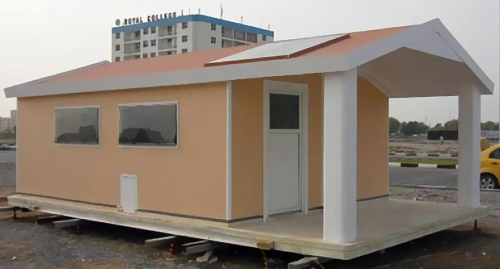
Using its own technology, InnoVida produces Fiber Composite Panels (FCPs) which are used to build energy-efficient structures without the need for concrete, wood or steel and with significant savings in cost and time to build.
A standard house can be constructed from prefabricated elements in 1-3 days.
The FCPs are load-bearing, insulating panels with structural skins made of high-strength E-glass fibre fabrics impregnated with a fire-resistant polymeric epoxy resin. Cored with foam, the FCPs are used to construct exterior and interior walls, beams, columns, profiles and roof panels. All construction elements support the structure and each other, explains InnoVida, noting that load calculations allow for interior walls to function as support elements, eliminating beams in many designs.
Pre-fabricated FCP building elements are prepared at an InnoVida manufacturing facility, using standard panels. Cut-outs are made for windows, doorways and architectural curves and angles. At the construction site, the FCPs are erected and joined using InnoVida Bond, which forms strong chemical welds that cannot be equaled using fasteners such as screws and nails, according to the company.
The latest InnoVida manufacturing facility is under construction in Haiti and is scheduled for completion this winter. Plans call for an estimated 32 000 energy-efficient homes to be built using FCP panels over the next 5 years. University testing using energy simulation software, showed that a 1200 ft2 (111.5 m2) house built with FCP panels would use 61% less energy than one built with concrete walls and other conventional materials, according to InnoVida.
This article is an extract from the feature Building on the advantages of composites in construction, published in the September/October 2010 issue of Reinforced Plastics magazine. You can read the complete feature here.






